Last-Minute NYC Holiday Gift Guide 🎁
We’ve created a holiday gift guide with presents for the intrepid New Yorker that should arrive just in time—


On January 1st, 2017 one of the most long-awaited urban infrastructure projects in New York City history debuted: the Second Avenue Subway line started operating. First proposed in 1919 as part of a study by engineer Daniel L. Turner, the project has been marred with a bevy of hurdles–from budget cuts, delays, fiscal crises, to unfortunate world events (the Great Depression, Korean War, etc.).
In celebration of this long anticipated line, the New York Transit Museum has a new exhibit, Next Stop: Second Avenue Subway, which is currently on display in downtown Brooklyn. The exhibit encapsulates nearly 100 years of history of “The line that almost never was,” starting from the first proposal by Turner,to the present. Next Stop: Second Avenue Subway is a multi-faceted exhibit that encompasses historical, political, and engineering aspects of the project in the context of city, and world history.
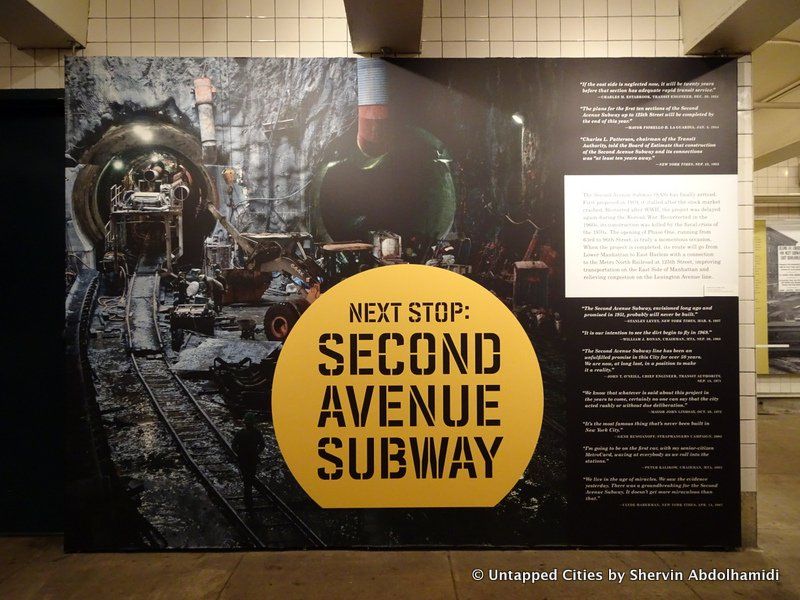
Jodi Shapiro, associate curator of the New York Transit Museum described the impact of the Second Avenue Line not just on the Upper East Side, but the whole city. Since its inception, the line has been “a way to seek more integration and make it easier for people to get around the city, even if they don’t live on Second Avenue. And that is part of the reason why there were so many plans since 1919,” Shapiro says.
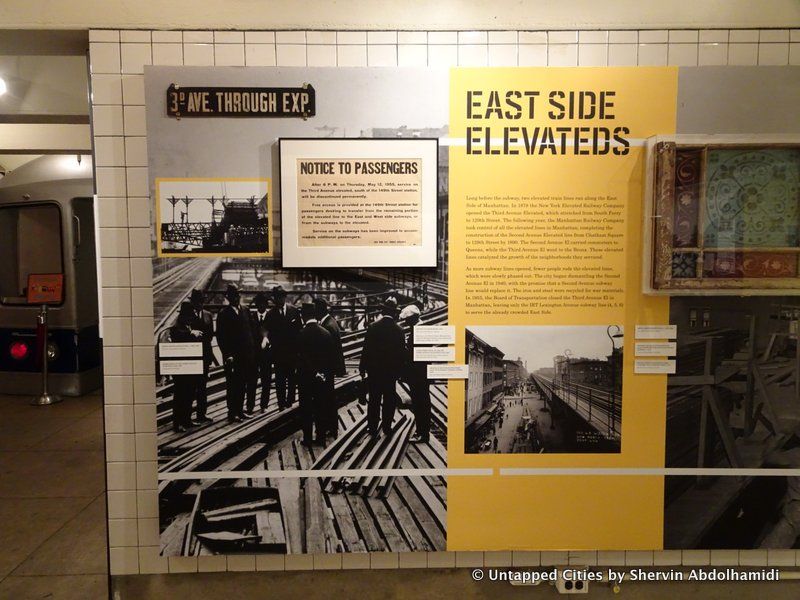
One example of the city-wide impact of the Second Avenue line is the Chrystie Street Connection, one of the only sections of the Second Avenue project to be built over the years. Opened in 1967 and 1968, the branch connected the Independent Subway System (IND) Sixth Avenue Line to the Brooklyn-Manhattan Transit Corporation (BMT) Brighton Line via the Manhattan Bridge, and to the BMT Jamaica line via the Williamsburg Bridge. Images of the Chrystie Street Connection’s construction are displayed in this chronological exhibit, which starts with numerous maps from the 1920s illustrating the city’s plans for expansion.
The exhibit overall contains a collection of images, documents, maps, and newspaper headlines from over the years, documenting the Second Avenue subway line project, and the setbacks and woes which it incurred. Looking at these documents it is evident just how severely progress was impeded by financial and world events: the crash of 1920s brought construction to a halt; World War II, which put all non-essential public works projects put on hold; the Korean War and soared inflation; and the City’s fiscal woes of the 70s. Shapiro points out, “The Board of Transportation couldn’t stop the Korean War; they couldn’t stop the stock market crash; they couldn’t stop World War II; the fact that they built anything in the 70s and they made ancillary plans in the fifties is kind of a miracle that affected our transportation today in a positive way.
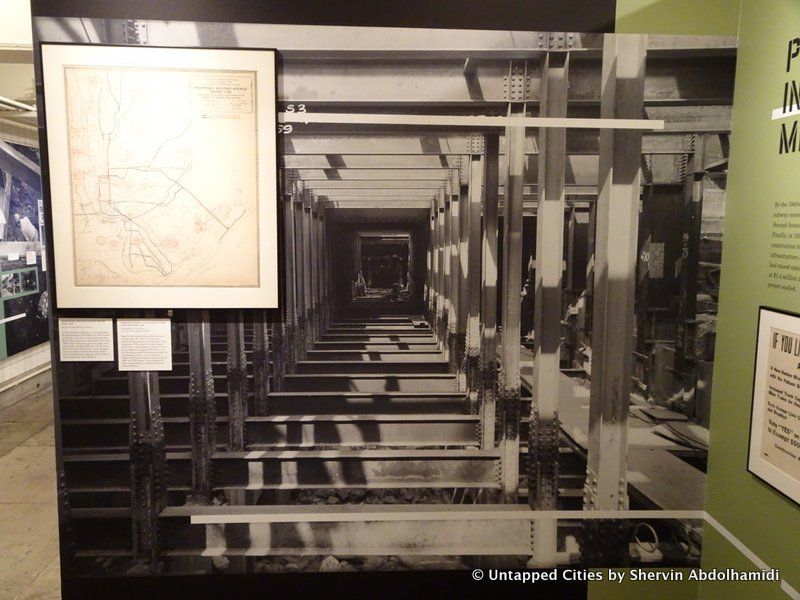
Aside from the Chrystie Street Connection, four groundbreakings were made in the seventies, with the first one held on October 27, 1972 by Governor Nelson Rockefeller and Mayor Lindsay at 103rd Street and Second Avenue. The other two groundbreakings were at Canal Street and Bowery in 1973, and at Second Avenue and Second Street. Shapiro tells us about a fourth tunnel, often dubbed the “The Secret Tunnel” which now takes the Q from 57th Street under Central Park to 63rd Street. Built for the Second Avenue line in the 70’s, the tunnel remained dormant, save a few usages in the early 90s and 2000s when track construction was underway. The tunnel would appear and then disappear on maps, Shapiro says, thus meriting the name “Secret Tunnel”.
That was the end of the line for the Second Avenue Line, until the 1990s when the MTA began the Manhattan East Side Alternatives Study (MESA) with the goal of recommending a course of action to alleviate congestion and delays on the 4, 5, and 6 lines and improve mass transit accessibility for residents on the far East Side of Manhattan. In August, 1999 the MESA proposed a Second Avenue Subway line running from 96th Street to 63rd St./Lexington Ave. Engineering design work was done between 2004 and 2006, after all approvals were made, and groundbreaking was done once on April 13th, 2007.
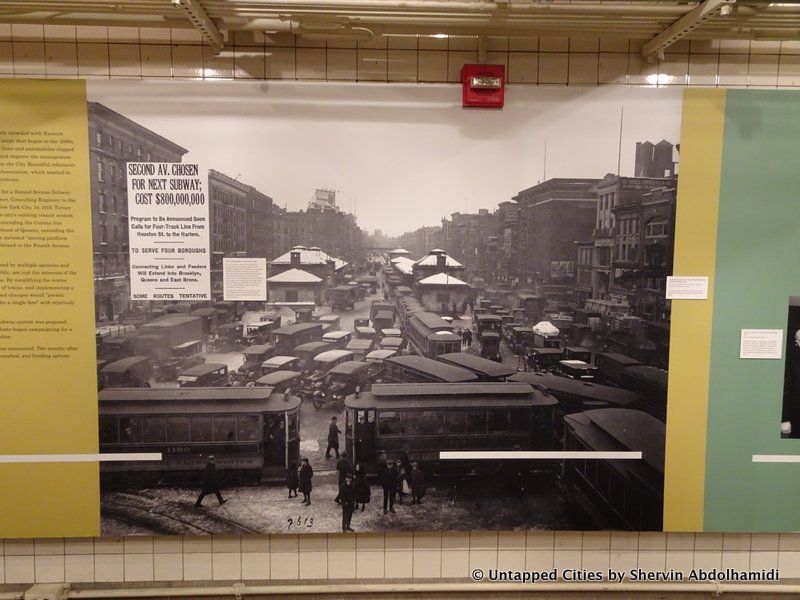
In the second half of the exhibit, a series of images and model illustrate the incredible labor, art, engineering and technology that was devoted to the Second Avenue line. A series of remarkable images capture the sheer magnitude of the project. A miniature model of the Second Avenue line illustrates which parts of the excavation were done by Tunnel Boring Machines (TBM), and which parts were done by cut-and-cover, or groundfreezing–the last of which is a technique over hundred years old. “Its a nice mesh of tried and true methods, and new technologies,” Shapiro says.

In a corner is a cutting disk from a TBM used to cut through the bedrock. We asked Shapiro why, despite all this incredible engineering, the pace of construction these days belies the remarkable technology available–especially in comparison to the pace of construction of previous lines. Shapiro points to the congestion of the New York City underground today, compared to a century ago. “There weren’t any high rise building and sewers, and electrical conduits, etc. For the most part, in most areas, there wasn’t anything to dig against.”

Another panel of the exhibit portrays the architecture of the station, and the art inside it. The new Second Avenue stations are some of the most architecturally modern stations in the system, designed both for both aesthetics and efficient flow of commuters. “The stations themselves are a work of art; there are all these different techniques they used to soundproof them, and ventilate them.” The art incorporated is also up to par with the technical design of the stations, with four renowned artists each working on one station in what is the largest public art installation in history, according to Shapiro.
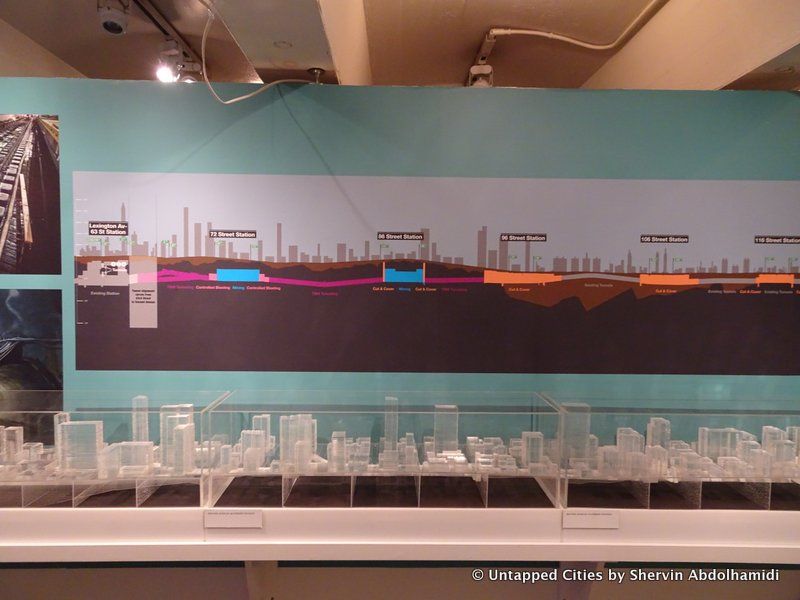
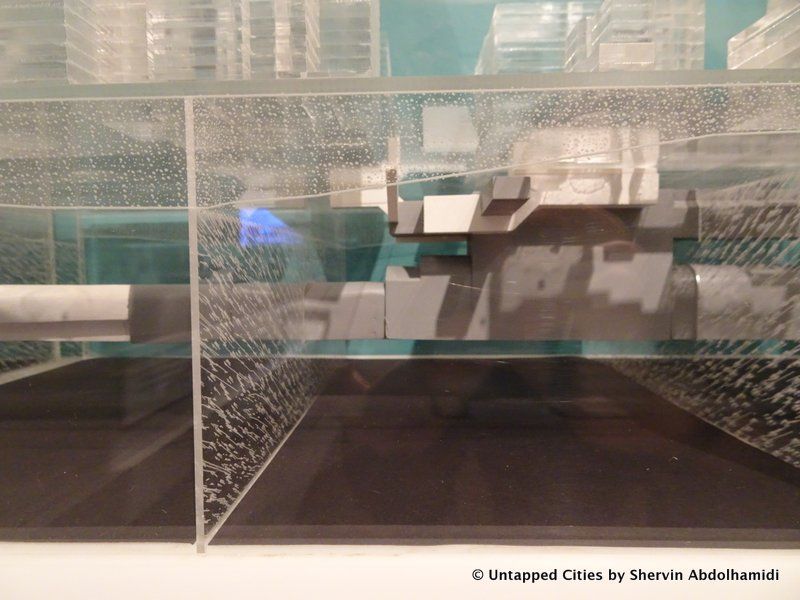
“What I hope we’ve shown with this show is the amount of work that goes into it; the planning that goes into it, and how many people are involved in it is almost as many people as carried by it every day,” Shapiro says. “Its something that effects a large portion of the city, even if you’ve never set foot on it.”
The impact that the Second Avenue line will have on the entire city is very evident in Next Stop: Second Avenue Subway. Indeed, more than 150,000 daily riders already commute on the new line, as reported by the MTA on January 25th. “It’s already changed the way people commute,” Shapiro remarks, “It’s also helping people in Queens and Brooklyn, and that was the intention of the line back in 1919, to make the whole transportation system more efficient. So even we only have a small segment of what the line is supposed to be, its already having the desired effect.”
Next, check out 10 Fun Facts about the Second Avenue Subway line and look back at our photos that document the construction of the Second Avenue Subway line since 2011.
Subscribe to our newsletter